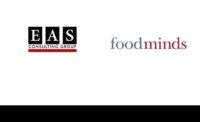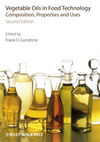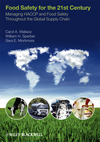Food Technology Solutions
Prepared Foods’ R&D Seminar speakers highlighted product development technologies and shared tools and advice to eliminate product inconsistencies.

SOURCE: iStock Photo © CARACTERDESIGN

To aid in creating ladder studies for additive analysis→Ability to start from a base formula and create variations on a theme→Ability to evaluate replacements for “discontinued components”


Benefits of Product Development Software
There are many pluses to using the right software to maximize a company’s product development capabilities. One company has made it especially advantageous and user-friendly.
In his recent Prepared Foods’ R&D Seminar titled “Benefits of Product Development Software,” Ted Pliakos, vice president sales, Advanced Software Design, outlined those benefits. He noted Resource Specification Management; Product Development & Optimization; Regulatory Compliance; Workflow; Guidelines and Restrictions Management; and seamless integrations to External Systems are key areas that directly see the positive effects of such a streamlined approach.
Resource queries, said Pliakos, “allow developers to quickly locate components which meet needed criteria or which can be used as substitutes.” Resource Management also involves being able to utilize multiple resource types, which can be created for a more accurate formula costing.
An unlimited amount of user-defined properties/specifications can be entered or calculated. “In addition, multiple costs for resources can be entered—which roll up automatically into associated formula costs,” he stated.
The Ingredient Description feature allows for the entry of multiple ingredient descriptions for use on the formula ingredient declaration(s). This is useful for country, language and/or application specific reasons. Similar components are automatically grouped according to description and placed in the proper order in the declaration.
To eliminate the need to search through paper files or archived spreadsheets to find what changed in a recipe and why, the Audit Tracking functionality provides a complete history of changes made to an item. The date, time and user are recorded, along with the specific details of the change.
“All relevant product information, such as the resource’s costs, characteristics, specifications, vendor information and other related documents, are maintained in one place,” added Pliakos.
Powerful data query capabilities make it very easy to leverage earlier efforts when starting a development project. One can easily find starting-point recipes for similar requirements that can be quickly copied and used in the new project. This can help to shorten the development cycle.
Formula Views enable any number of user-defined formula information views, depending on the job description of the user or type of formula. For example, it can provide both regulatory and nutritional views onscreen.
Formula Properties may include Composition Information, Quality Control Specifications, Regulatory Status, or any other numeric, text, date or logical information. Moreover, stated Pliakos, “Details of which components contribute to a particular property value, such as ‘per 100g level of sodium,’ can be accessed instantly.”
Nutritional Properties/Claims help defining various claims criteria (i.e., low-cholesterol, etc.). The Alerts system warns/advises users that a special situation exists for a resource or formula.
One excellent feature of Formula Optimization takes the form of presenting “what-if” scenarios.
“A What-if Scenario permits developers to quickly prototype new formulas by setting targets on properties—such as the weight %, fats, sodium or costs—and then allowing the system to re-formulate to meet that criteria. Additionally, a user can edit or substitute components and see the effects of those changes in a real-time fashion,” Pliakos added.
The ability to compare formulas allows for prototyped formulas to be contrasted side-by-side to see unique differences—based on both their components and properties.
The Regulatory Compliance abilities includes nutrition labels, ingredient declarations, safety data sheets, as well as kosher, allergen or organic statements. These functions “greatly reduce the time necessary to prepare this information,” he mentioned, and the information is available instantly when a recipe is created.
The Facts Panel page automatically creates nutrition labels and ingredient declarations which comply with regulations. “This greatly reduces the time required to create the product label and guarantees consistency with the formula,” said Pliakos.
The Workflow capability greatly simplifies the execution and tracking of workflows that are commonly encountered in product development. Some typical workflow types include: development of new/revised formulations; approval of new raw materials; approval of regulatory documents; stage-gate processes; and vendor approval.
The Workflow scheduling option “allows you to coordinate the status of projects to make sure they stay on-time and on-budget,” offered Pliakos. Moreover, the procedures are formally documented and followed exactly, ensuring that the work is performed on-time in the way planned by management, meeting all business and regulatory requirements.
Guidelines and Restrictions capabilities provide the tools necessary to maintain compliance with country, market and/or application-specific ingredient restrictions worldwide.
In conclusion, a single-integrated system means data does not have to be re-entered in multiple data bases and helps to reduce the cost of storing and managing redundant data.
“Benefits of Product Development Software,” Ted Pliakos, vice president sales, Advanced Software Design, 636-532-6021, ted@asdsoftware.com
Why Measure Food Texture?
Texture measurement is useful during product development and at any stage throughout the process, whether in R&D or production. Similar to measuring chemistry, pH or color, it is helpful to know what is going on with texture. During scale-up, often, tweaks are needed: Settings on equipment need adjustment, but there needs to be a reference as to what to shoot for, as far as the texture of that product.
The consumer is very fickle; they do not care what the problems are. However, once they have tried a product and like it, they expect it to be the same every time. This means the product needs to perform the same in production as it did in the lab.
In addition to product development, other uses for measuring texture may involve checking a product against competitors. Marketing may say they want a product “just like this” or exactly the same when put in the consumers’ mouths as the other product. Or they may want product that is 25% more “x”.
“What needs to be done to tweak it to make it smoother, softer or crunchier can be determined with texture analysis,” explained Al Wassilak, Midwest regional manager for Texture Technologies Corporation, in his Prepared Foods’ R&D Seminar titled, “Why Measure Food Texture?”
“Human tasters cannot necessarily come up with these vague measurements,” stressed Wassilak.
Food companies want products made in different plants and different cities to be the same, but available ingredients might not be the same in both cities. One may need to purchase a different ingredient. Texture measurements can help achieve uniformity between plants and cities, as well as minimizing batch to batch variance.
“Unfortunately, all plants were not built at the same time, with the same equipment,” added Wassilak. “Blending, sheeting and extruding processes in different locations may need adjustments to be equal to equipment at another plant. Even in two production lines side by side…line B goes around a post, and product always seems to be a little different. Differences between the day-shift and night-shift—or even between operators—can be pinpointed using texture technology.”
For example, Wassilak mentioned a cookie manufacturer with differences between batches, and the company did not know why. It ended up that there had been no standard mixing order or mixing time. Operators each had their own way of blending the formula, making the cookie dough different each time it was produced. After many years, taste panels and texture measurements, it was narrowed down to the texture of the cookie dough, and it is now very consistent—every time.
Taste panels establish likes and dislikes. Many samples are required for statistics. It is expensive, time-consuming, variable and judgmental. A fast food company measured French fries with texture analyzer and with people to taste and rate the fresh French fries. They came up with likes and dislikes to understand what they were looking for and tied those to texture values.
Once the texture measurements are aligned with the likes and dislikes, the product can always be made to the gold standard. The instrument is impartial and does not get tired, like tasters. It is very repeatable; can be done in the lab and plant; and settings can be transferred. It takes only seconds or minutes to run a test.
“Why Measure Food Texture?” Al Wassilak, Midwest regional manager, Texture Technologies Corp., awass@texturetechnologies.com, 847-854-9536
—Summary by Elizabeth Pelofske, Con. Ed.
Looking for a reprint of this article?
From high-res PDFs to custom plaques, order your copy today!










